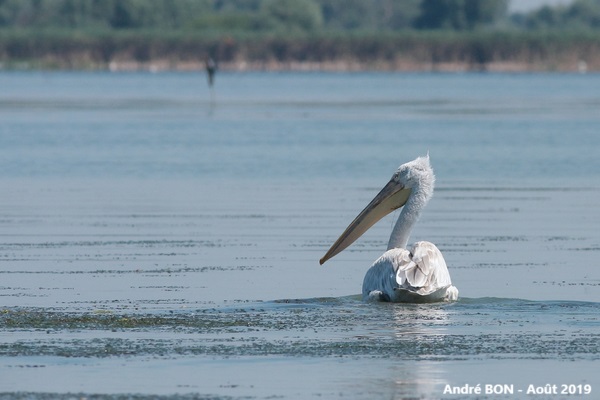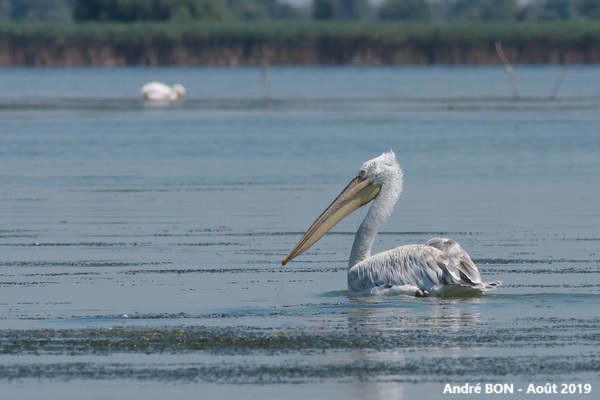

| Dalmatian Pelican (Pelecanus crispus (Bruch, 1832)) |


|
|
Scientific name: Pelecanus crispus (Bruch, 1832) Common name: Dalmatian Pelican French name: Pélican frisé Order: Pelecaniformes Family: Pelecanidae Size: Body size: 160 to 183 cm; Weight: 10 to 13 kg; Wingspan: 245 to 350 cm. Habitat: Lakes, ponds and deltas bordered by thick marsh vegetation, particularly reed beds. Food: Exclusively fish (up to 1 kg per day). Nesting: The female lays 2 eggs between late March and early May in a nest made of a mass of reeds. Dalmatian Pelicans generally nest in colonies. Migration: Partially migratory, in winter some European birds move to the Nile Delta. Central Asian birds winter in the northern Indian Ocean and on the Pacific Ocean coasts of China. Geographic area: South-eastern Europe, Middle East, Central Asia with some isolated populations as far as Mongolia. The species declined sharply in the 20th century due to habitat loss and is now classified as Near Threatened. |
The Dalmatian Pelican is the largest and most endangered of the 8 species in the Pelecanus genus. It is characterized by a white-grey plumage, long curly feathers on the head and nape, and long, thin feathers on the top of the head that often hang forward. The legs are grey. During the breeding season, the jugular pouch and the area around the eyes turn to orange-red. The underside of the wings is much lighter compared to the Great White Pelican. The Dalmatian Pelican is one of the heaviest birds that can fly. |
| [To know more about the Dalmatian Pelican] [Next picture] [Top] |

|
The white-grey plumage and the feathers on the top of the head are characteristic of the Dalmatian Pelican. In the Danube Delta the Great White Pelican (Pelecanus onocrotalus) is also found, and in much greater numbers. |
| [To know more about the Dalmatian Pelican] [Previous picture] [Top] |

|
The size of the bill is really impressive but the jugular pouch here does not have the orange-red colour of adults in the breeding season. |